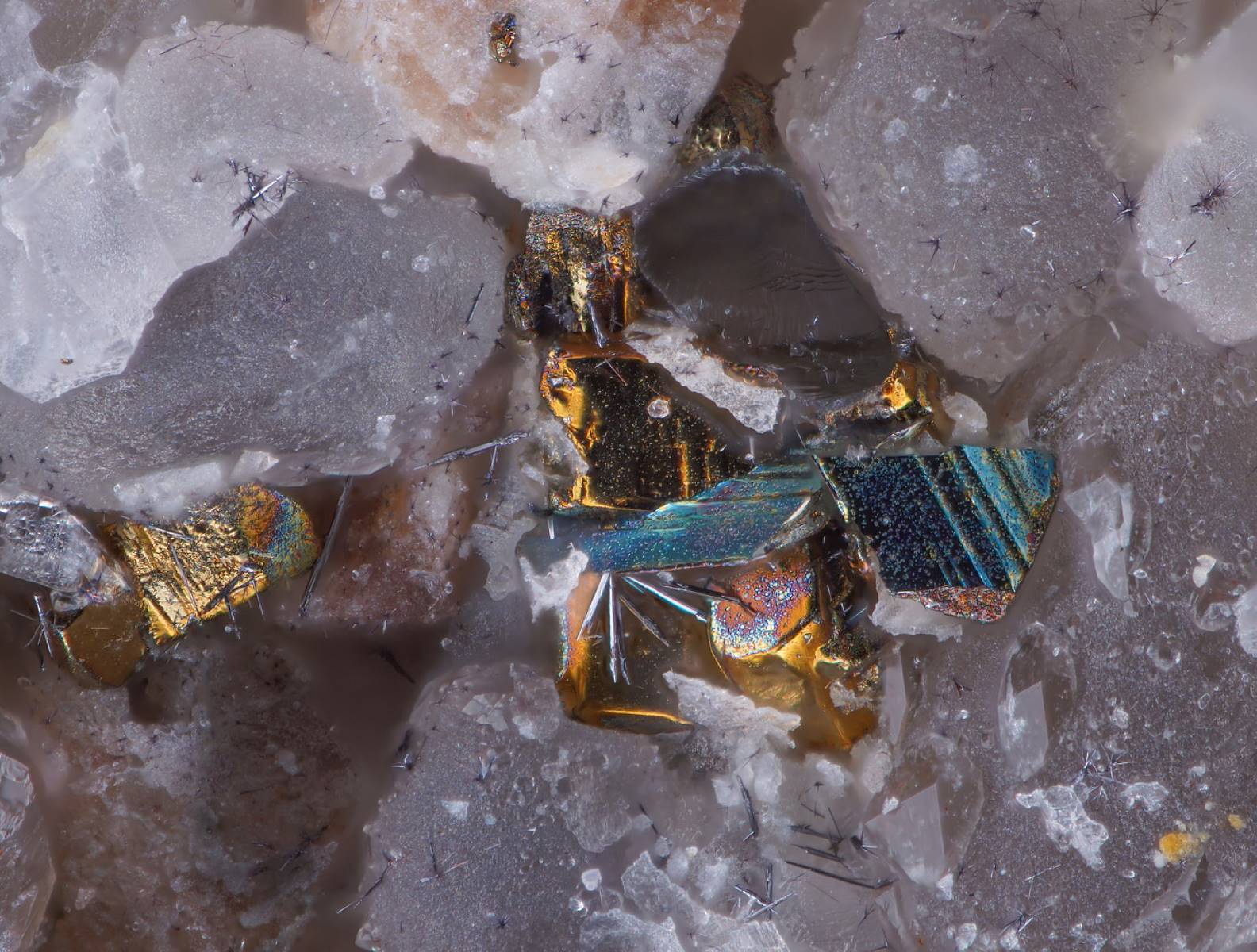
Ferroselite is a fascinating mineral that often flies under the radar. Found in various parts of the world, this mineral has unique properties that make it stand out. Ferroselite is primarily composed of iron and selenium, giving it a distinctive look and chemical makeup. It usually forms in hydrothermal veins and can be associated with other minerals like pyrite and chalcopyrite. This mineral is not just a pretty face; it has practical applications in industries such as electronics and metallurgy. Whether you're a geology enthusiast or just curious, learning about Ferroselite can be both educational and intriguing. Let's dive into 30 facts that will give you a comprehensive understanding of this remarkable mineral.
Key Takeaways:
- Ferroselite is a rare, shiny mineral composed of iron and selenium. It forms in cracks in rocks and has applications in scientific research, industry, and even as a collector's item.
- This unique mineral, with its metallic luster and black color, has potential uses in semiconductor technology and can even be found in meteorites. It's a fascinating subject for both scientists and collectors alike.
What is Ferroselite?
Ferroselite is a rare mineral that has intrigued scientists and collectors alike. It’s known for its unique properties and fascinating formation process. Let’s dive into some interesting facts about this mineral.
-
Ferroselite is a selenide mineral composed primarily of iron and selenium.
-
It was first discovered in 1932 in the Harz Mountains of Germany.
-
The mineral typically forms in hydrothermal veins, which are cracks in rocks filled with hot, mineral-rich water.
-
Ferroselite often appears in metallic gray or black colors, making it visually striking.
-
It has a metallic luster, giving it a shiny, reflective surface.
-
The mineral is relatively soft, with a Mohs hardness of 2.5 to 3.
-
Ferroselite is often found alongside other selenide minerals like clausthalite and naumannite.
Chemical Composition and Structure
Understanding the chemical makeup and structure of ferroselite can provide insights into its properties and uses.
-
The chemical formula for ferroselite is FeSe2.
-
It crystallizes in the orthorhombic system, which means its crystal structure is shaped like a stretched cube.
-
Ferroselite has a high density due to the presence of heavy elements like iron and selenium.
-
The mineral’s structure consists of chains of iron atoms bonded to selenium atoms.
-
It is opaque, meaning light cannot pass through it.
-
Ferroselite is paramagnetic, which means it is weakly attracted to magnetic fields.
Occurrence and Extraction
Where ferroselite is found and how it is extracted are crucial for both scientific study and industrial use.
-
Besides Germany, ferroselite has been found in China, Russia, and the United States.
-
It is often extracted from underground mines, where hydrothermal activity has occurred.
-
The mineral is usually found in small quantities, making it rare and valuable.
-
Ferroselite is often extracted alongside other valuable minerals like gold and silver.
-
Mining ferroselite requires specialized equipment due to its association with other minerals.
-
The extraction process can be environmentally challenging, requiring careful management.
Uses and Applications
Ferroselite has several applications, particularly in scientific research and industry.
-
It is used in the study of hydrothermal processes, helping scientists understand how minerals form.
-
Ferroselite is also used in geochemical research to study the distribution of selenium in the Earth’s crust.
-
The mineral has potential applications in semiconductor technology due to its unique electrical properties.
-
It is sometimes used as a collector’s item due to its rarity and aesthetic appeal.
-
Ferroselite can be used in educational settings to teach students about mineralogy and geology.
Interesting Tidbits
Here are some lesser-known facts that add to the allure of ferroselite.
-
Ferroselite can sometimes be found in meteorites, suggesting it can form in space.
-
The mineral’s name comes from the Latin words for iron (“ferrum”) and selenium (“selenium”).
-
Ferroselite can sometimes form pseudomorphs, where it replaces another mineral’s structure without changing its external shape.
-
It is often studied using X-ray diffraction to understand its crystal structure.
-
Ferroselite can be sensitive to oxidation, meaning it can react with oxygen over time.
-
The mineral is sometimes used in artisanal jewelry, although this is rare due to its softness and rarity.
Ferroselite Facts Recap
Ferroselite, a rare iron selenide mineral, holds a unique place in the mineral world. Found mainly in hydrothermal veins, it often coexists with other selenium minerals. Its metallic luster and grayish-black color make it easily identifiable. Ferroselite's crystal structure is orthorhombic, adding to its distinctiveness. This mineral is not just a collector's item; it's also studied for its potential industrial applications, especially in electronics due to its semiconducting properties.
Understanding ferroselite's formation and properties helps geologists and mineralogists in their research. Its rarity and unique characteristics make it a subject of fascination for many. Whether you're a seasoned geologist or just curious about minerals, ferroselite offers a glimpse into the complex and intriguing world of geology. Keep exploring and learning about these fascinating natural wonders!
Frequently Asked Questions
Was this page helpful?
Our commitment to delivering trustworthy and engaging content is at the heart of what we do. Each fact on our site is contributed by real users like you, bringing a wealth of diverse insights and information. To ensure the highest standards of accuracy and reliability, our dedicated editors meticulously review each submission. This process guarantees that the facts we share are not only fascinating but also credible. Trust in our commitment to quality and authenticity as you explore and learn with us.
